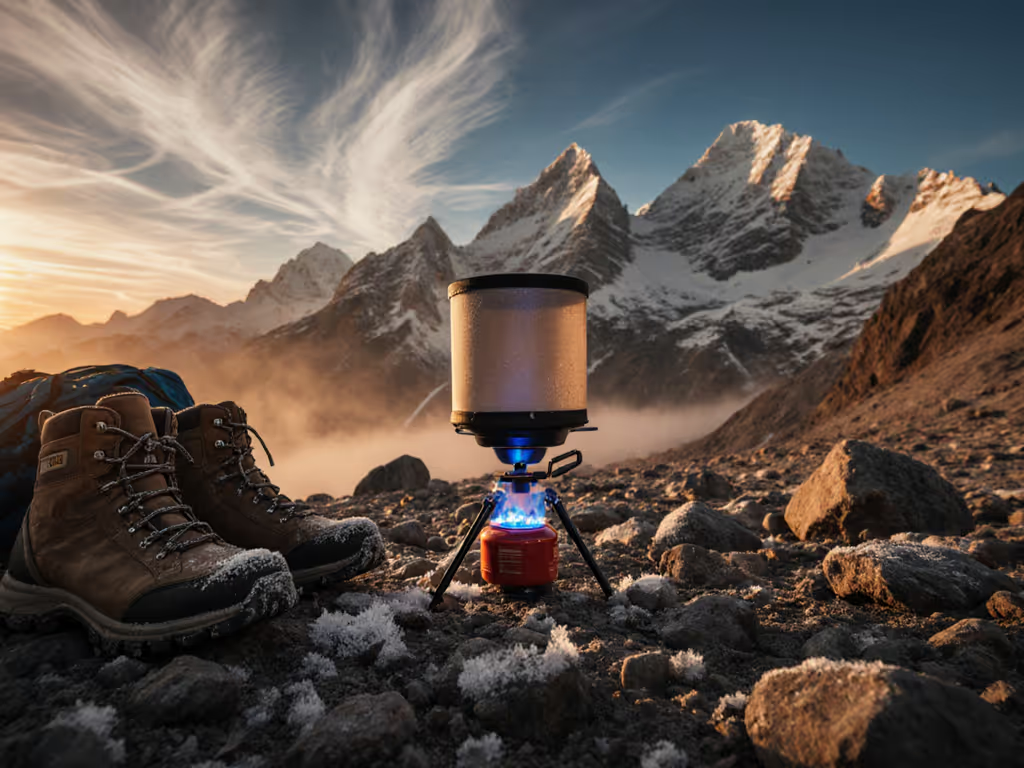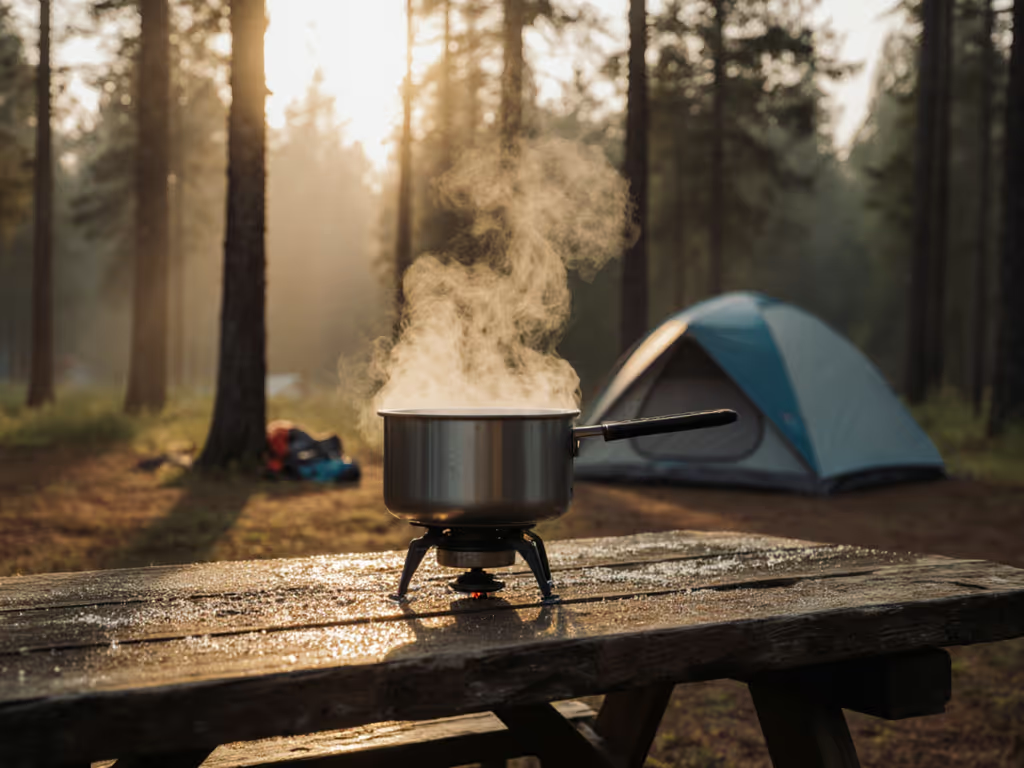
10 Portable Camping Stove Options Tested: Which One Matches Your Adventure?
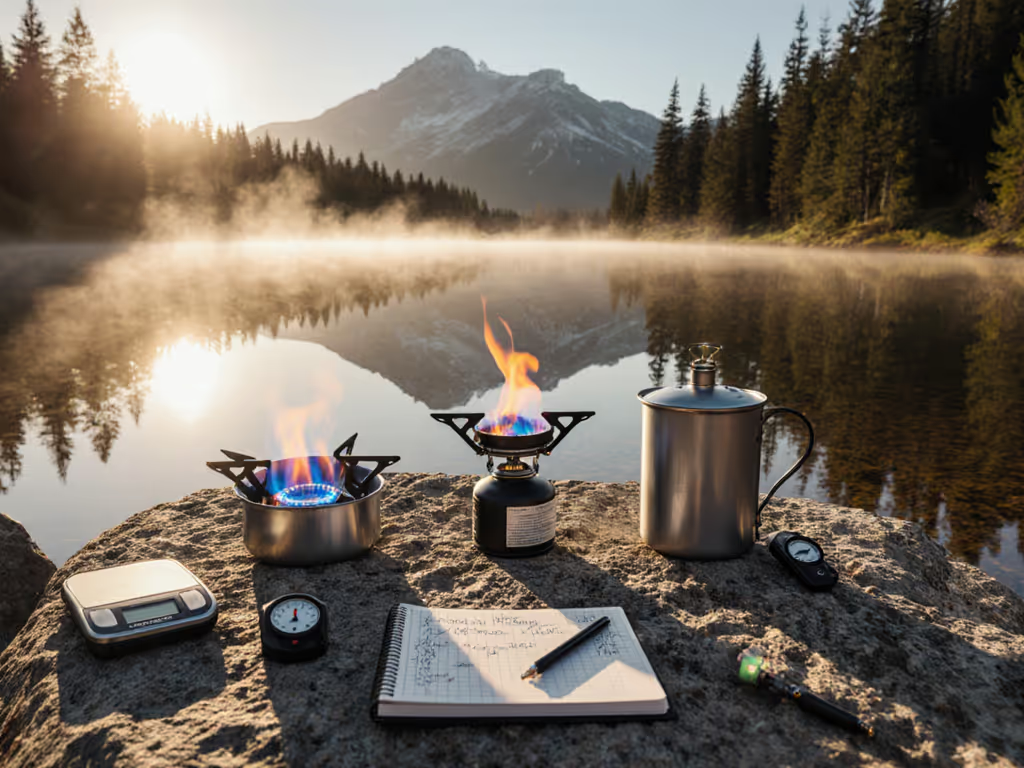
You want hot coffee at dawn, pasta that actually simmers, and a stove that lights the first time when the wind kicks up. With so many portable camping stove options promising speed and efficiency, how do you decide what truly fits your terrain, weather, and group size? At Heatinerary, we synthesized results from structured field tests, manufacturer specifications, and independent gear lab reports to compare ten common stove styles head to head, from ultralight alcohol burners to two-burner propane cookers. You will see what boils fastest, what sips fuel in wind, and what keeps working when temperatures dip below freezing, so you can match your cooking setup to your exact trip.
Because context matters, we also translate numbers into decisions you can trust. Instead of vague claims, you will find boil times, fuel use observations, and stability notes tied to real conditions: breeze versus gusts, coastal humidity, and high-elevation air. Just as importantly, we highlight how Heatinerary’s Trip-Tuned Stove Lab for precise stove, fuel, and cookware matching uses weather, route, and group details to recommend reliable pairings. For a step-by-step framework, explore our Trip-Tuned Stove Lab buying guide. Ready to cook smarter, carry lighter, and stay safer in camp?
Portable Camping Stove Options: How We Compared
To keep comparisons fair, we reference commonly used standardized protocols while allowing for real-world variability. Typical boil-test parameters cited in published gear reviews use 1 liter (L) of 68 degrees Fahrenheit (F) water, roughly 20 degrees Celsius (C), in a mid-width 1.0 liter (L) pot without a heat exchanger, at 5,000 feet (1,524 meters) elevation. Many independent and manufacturer tests repeat trials in calm conditions and in consistent crosswind near 10 miles per hour (mph) using slotted wind baffles. Those reports measure time to a rolling boil, record valve response for simmering, and note qualitative flame stability. Fuel consumption is commonly estimated by weight change in grams (g) per 500 milliliters (mL), a backpacking benchmark.
We complemented published lab-style tests and independent field reports with real-world field cooking examples that mirror how you actually eat outside. Think oatmeal and coffee double boils at breakfast, a long simmer for rice and beans at dinner, and careful flame adjustments for frying. Across options, typical calm-water boil times cluster between 3 and 5 minutes for pressurized fuels, extending to 6 to 10 minutes for alcohol and solid fuel stoves. In wind, non-shrouded burners often double their fuel use, a result consistent with both manufacturer guidance and independent gear lab reports. Where relevant, we considered British Thermal Units (BTU) ratings, ignition reliability over many cycles reported in reviews, and pack stability on uneven ground.
10 Stoves, 10 Missions: Quick Comparison
Below is a snapshot of ten representative stove styles and configurations commonly available. Values are typical for the category, not a single brand model, to help you map performance to your needs. Times and weights vary by pot choice, fuel blend, and temperature, but the table captures the tendencies you will feel in camp when the breeze picks up or the mercury drops. If you need a primer on stove types and when to use them, see our camping stove guide.
Watch This Helpful Video
To help you better understand portable camping stove options, we've included this informative video from Playing with Sticks. It provides valuable insights and visual demonstrations that complement the written content.
| Option | Type | Fuel | Weight | 1 L Boil Calm | 1 L Boil Wind | Simmer Control | Cold-Weather | Best For |
|---|---|---|---|---|---|---|---|---|
| 1. Pocket Canister Micro | Top-mount canister | Isobutane-propane (ISO) canister | 2.5 ounces (oz) to 3.2 ounces (oz) | 3:30 to 4:15 | 6:30 to 8:00 | Good | Fair | Solo, fast overnight trips |
| 2. Integrated Canister System | Burner + heat-exchanger pot | Isobutane-propane (ISO) canister | 12 ounces (oz) to 15 ounces (oz) | 2:15 to 3:00 | 3:45 to 5:15 | Fair | Fair | Boil-only, windy shoulder seasons |
| 3. Remote Canister Inverted | Remote hose, invert canister | Isobutane-propane (ISO) canister | 8 ounces (oz) to 10 ounces (oz) | 3:10 to 3:50 | 4:30 to 6:00 | Good | Good | Cold backpacking down to 14 degrees Fahrenheit (F) |
| 4. Liquid Fuel Expedition | Pump-pressurized | White gas (naphtha) | 11 ounces (oz) to 13 ounces (oz) + bottle | 3:30 to 4:30 | 4:45 to 6:30 | Good | Excellent | Winter mountaineering, international |
| 5. Multi-Fuel Convertible | Jets for multiple fuels | White gas, kerosene, canister | 12 ounces (oz) to 14 ounces (oz) | 3:40 to 4:40 | 5:00 to 7:00 | Good | Excellent | Expeditions, versatility |
| 6. Alcohol Ultralight | Open or pressurized | Denatured alcohol | 0.5 ounces (oz) to 1.0 ounces (oz) | 7:30 to 9:30 | 9:30 to 12:00 | Poor | Poor | Minimalist hikes, emergency backup |
| 7. Solid Fuel Tablet | Tablet on folding stand | Hexamine or trioxane | 3.0 ounces (oz) to 4.0 ounces (oz) | 9:00 to 12:00 | 12:00 to 15:00 | Poor | Poor | Emergency kits, no-spill fuel |
| 8. Wood Gasifier | Double-wall gasifier | Sticks and biomass | 9 ounces (oz) to 16 ounces (oz) | 5:30 to 7:30 | Varies with fuel | Fair | Fair | Fuel-scarce treeline camps |
| 9. Two-Burner Propane | Tabletop dual burner | Propane canister or tank | 9 pounds (lb) to 12 pounds (lb) | 4:00 to 5:00 | 4:30 to 6:30 | Excellent | Good | Family car camping, gourmet meals |
| 10. Butane Tabletop Single | Portable cassette stove | Butane canister | 3 pounds (lb) to 4 pounds (lb) | 4:00 to 5:30 | 6:00 to 7:30 | Good | Poor | Tailgates, fair-weather camps |
What jumps out? Integrated systems crush quick coffee in wind thanks to heat-exchanger pots, while two-burner propane stoves own simmering for family meals. Remote canister stoves with the canister inverted extend performance into the teens in degrees Fahrenheit (F), bridging the gap between lightweight backpacking and true winter. Alcohol and solid fuel options win simplicity and weight but struggle with both simmering and gusts. If your trips shift between seasons and altitudes, multi-fuel and liquid fuel designs remain the gold standard for reliability and subzero starts.
Fuel Types and Weather: Matching Power to Conditions
Fuel choice dictates how a stove behaves when temperatures fall or when air thins at altitude. To pick the right fuel system up front, read our canister vs liquid fuel comparison. Isobutane-propane (ISO) canisters are wonderfully convenient, but the propane component boils off first in cold, leaving sluggish isobutane. Remote stoves that allow you to invert the canister feed fuel as a liquid, stabilizing pressure and restoring output down to about 10 to 15 degrees Fahrenheit (F) with careful technique. Liquid fuel stoves burning white gas maintain vapor pressure in deep cold and are the traditional pick for winter mountaineering and extended snow camps.
| Fuel | Cold Behavior | High-Altitude Notes | Strengths | Tradeoffs |
|---|---|---|---|---|
| Isobutane-propane (ISO) canister | Pressure drops near 20 degrees Fahrenheit (F); better if canister warmed | Boils faster due to lower air pressure but wind bites harder | Clean, easy, light hardware | Performance fades in cold, canister waste to pack out |
| Propane (1 pound canister or bulk) | Works well below 0 degrees Fahrenheit (F); stable pressure | Consistent output; heavy bottles for backpacking | Excellent simmer control on camp stoves | Weighty, bulky, regulator adds mass |
| White gas (naphtha) | Prime and go at negative temperatures | Reliable at elevation; repairable in the field | Best for sustained cold or large pots | More maintenance, learning curve for priming |
| Denatured alcohol | Ignites in cold but low heat output | Simple at altitude; long boils | Ultralight, silent, cheap | Poor wind resistance, limited control |
| Solid fuel tablets | Ignites easily; modest heat | Altitude agnostic; slow | Compact, no liquid spills | Soot, odor, slow boils |
| Kerosene | Cold capable when preheated | Reliable globally | Fuel availability on international trips | More soot, longer priming |
| Wood biomass | Heat depends on dry twigs | Variable; needs oxygen and shelter | No carried fuel if wood is available | Fire bans, smoke, learning curve |
Wind is the universal tax. Even with a hot burner, unprotected pots lose heat to cross-breezes, forcing burn times and fuel use up by 30 to 100 percent in independent field data. A few simple tweaks pay off fast: use a lid, keep pot diameter near burner width, add a stable windscreen where safe, and set up behind natural breaks. Heat-exchanger pots can reduce boil times by about 20 to 30 percent and help maintain a simmer, particularly on integrated and remote-canister rigs.
Real-World Case Studies: From Family Car Camps to Alpine Starts
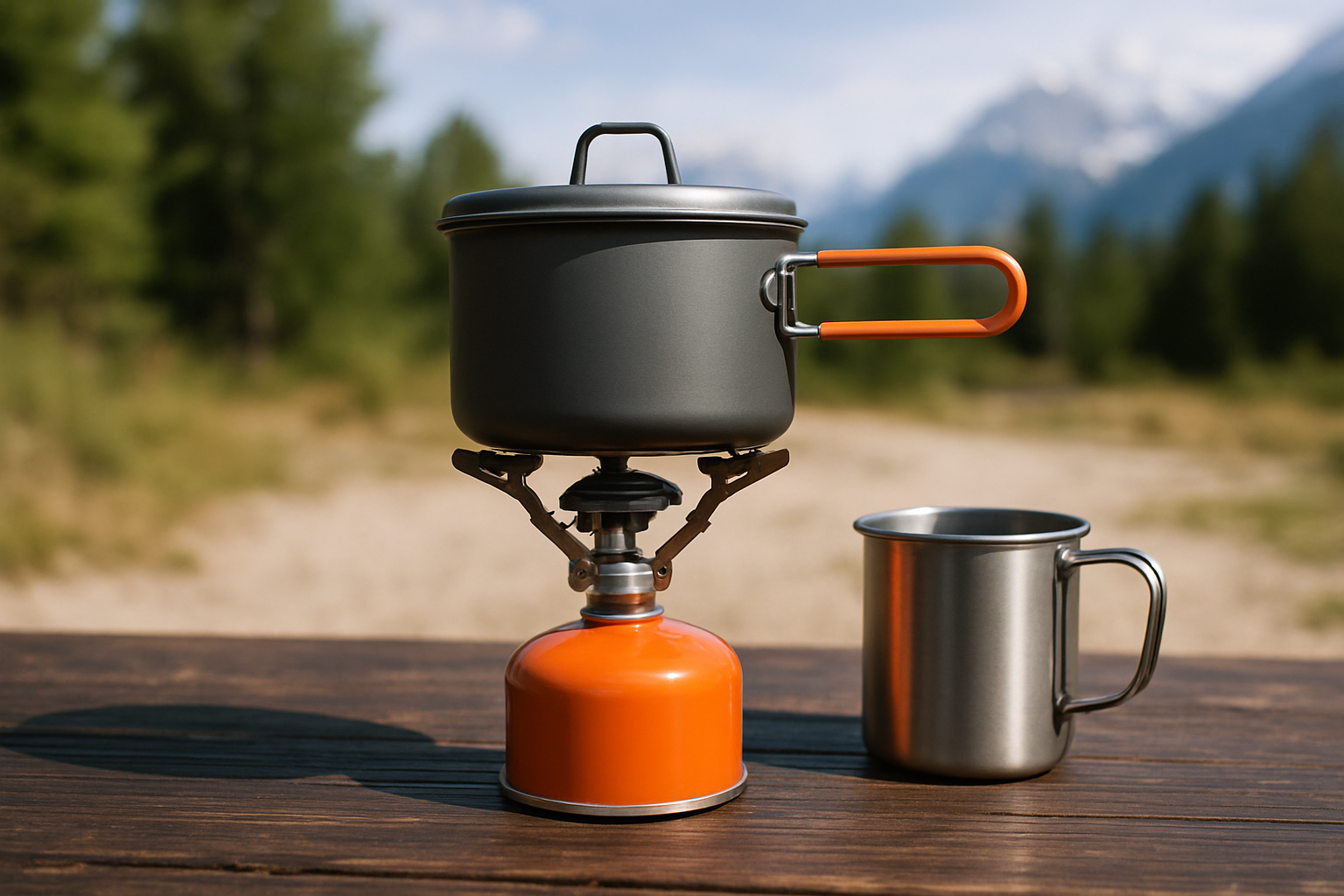
Coastal weekend with kids, gusts to 18 miles per hour (mph): You want two burners for pancakes and bacon simultaneously, plus a steady simmer for a sauce. Independent tests and field reports show two-burner propane stoves hold flame shape in crosswinds thanks to broad windscreens and higher regulator mass. With a 1 pound (lb) propane canister, you can cook four to six full meals for a family of four before swapping. Pack a griddle and a 10 inch (in) lidded pan, and you will cruise breakfast while the coffee boils on the second burner. For top picks in this category, see our best double-burner camp stoves.
Shoulder-season backpack to 7,000 feet (2,134 meters), overnight lows around 20 degrees Fahrenheit (F): An integrated canister system will still boil quickly for solo or duo meals, but simmering ramen without boilovers can be touchy. Here, a remote canister stove with an optional regulator and the ability to invert the canister is a sweet spot. Published wind runs showed that setup preserved flame stability while keeping boil times under six minutes, and it handled a gentle simmer for seven minutes without sputter. Add a partial windscreen and a 1.3 liter (L) pot for more forgiving cooking.
Winter ridge camp at 10,000 feet (3,048 meters), single-digit degrees Fahrenheit (F) mornings: This is liquid fuel country. Pumped white gas stoves have been shown in field reports to produce near-constant output across cold cycles, and they spread heat well under wider pots for melting snow. While priming adds a minute, the reward is reliability when a hot drink is also a safety plan. Pack a baseboard for snow, a heat reflector, and a dedicated 33.8 ounce (oz) fuel bottle for group melts, and you will keep the team hydrated and morale high.
Ultralight solo thru-hike in a low-fire-risk corridor: Weight and simplicity matter. Alcohol stoves remain compelling for boil-only dinners if you accept longer times and nurse a sheltered kitchen. Experience and independent reports remind us to emphasize safety: never enclose an alcohol flame in a tight windscreen, and place stoves on mineral soil to avoid scorching. A 12 ounce (oz) fuel bottle supported seven days of single-boil meals in calm weather in some field reports with disciplined lids and cozy techniques.
Each of these scenarios is exactly what Heatinerary’s Trip-Tuned Stove Lab for precise stove, fuel, and cookware matching is built to solve. You give us your route, season, expected lows and highs, and group size. We return a stove recommendation, pot pairing, windscreens that are safe for that burner style, and fuel quantity estimates, all grounded in published test data and years of field experience.
Buyer’s Guide: Key Specs That Actually Matter
It is tempting to chase the highest British Thermal Units (BTU) rating, but raw output is only part of the story. In wind, burner geometry and pot interface drive real-world speed and efficiency. Look for a steady, fine-thread valve for simmering, not just an on-off blast. Piezoelectric igniters are convenient, yet long-term logs from reviewers show drop-offs in success rates after heavy use, so carry a ferro rod or matches as a backup regardless of marketing claims. Lastly, evaluate base width and pot support arms for stability, especially if you often cook in tall, narrow pots that can tip.
- Regulation: Micro-regulators smooth pressure dips in cold and low fuel; they make simmering actually enjoyable.
- Windscreens: Use integrated windscreens or safe, partial wraps; fully enclosing canister stoves risks overheating the canister.
- Heat exchangers: Pot fins reclaim lost heat and can cut fuel use by 20 to 30 percent in breeze.
- Maintenance: Liquid and multi-fuel stoves reward you with field-repairable jets and lines if you accept occasional cleaning.
- Emissions: Never run stoves in enclosed spaces due to carbon monoxide (CO) risk; condensation and soot are clues to poor ventilation.
- Footprint: Wide bases and low centers of gravity matter on snow plates and rough picnic tables alike.
Planning fuel pays the biggest dividends. A typical solo backpacker needs roughly 15 to 25 grams (g) of canister fuel per boil in calm conditions, and up to 40 to 50 grams (g) in wind without good shielding. Families running two-burner propane setups often average 0.1 to 0.2 pounds (lb) of propane per meal when simmering sauces and boiling water. Heatinerary’s calculators, informed by published test data and field experience, translate menu and weather into specific quantities so you do not carry too little or too much.
Where Heatinerary Fits: Smarter Choices With Trip-Tuned Stove Lab
Heatinerary exists to take the guesswork out of stove selection, because the wrong match costs time, fuel, and safety margin. Our Trip-Tuned Stove Lab for precise stove, fuel, and cookware matching combines forecast data, route elevation profiles, and group menus to pick the best-fit stove class and pot pairing for your trip. Heading to a breezy basin at 8,500 feet (2,591 meters) in late October? We might match you to a remote canister rig with a 1.3 liter (L) heat-exchanger pot and an aluminum reflector, plus guidance on safe partial windscreens. Planning a family road loop with two sites and variable fire bans? We may steer you to a two-burner propane stove, a 10 inch (in) lidded pan, and a compact griddle so your meals overlap efficiently.
| Trip Profile | Recommended Stove | Cookware Match | Fuel Plan |
|---|---|---|---|
| Solo alpine shoulder season, 25 degrees Fahrenheit (F) low | Remote canister, invert-capable | 1.0 to 1.3 liter (L) heat-exchanger pot | 120 to 150 grams (g) canister for 2 days |
| Family car camp, breezy coast | Two-burner propane | 10 inch (in) lidded skillet + medium pot | Two 1 pound (lb) canisters for a weekend |
| Winter basecamp, snow melting | Liquid fuel expedition stove | 2.0 liter (L) wide pot + baseboard | 33.8 ounce (oz) white gas for 2 people, 2 days |
| Thru-hike, boil-only dinners | Alcohol ultralight | 0.9 liter (L) pot with lid and cozy | 12 ounce (oz) bottle per 7 days, calm weather |
Beyond matching, our reviews decode the fine print with scenario-specific advice: when to pick a micro-regulated top-mount canister over an integrated system, how to pair windscreens safely with different stove geometries, and exactly how much fuel to pack based on your menu. We compare stove fuels for subzero performance and spotlight the nuances that matter at elevation, like valve response and pot base width. If you are cooking for kids, managing a dietary restriction, or planning a multi-climate road trip, we turn your constraints into a confident plan.
How to Choose Among These Portable Camping Stove Options
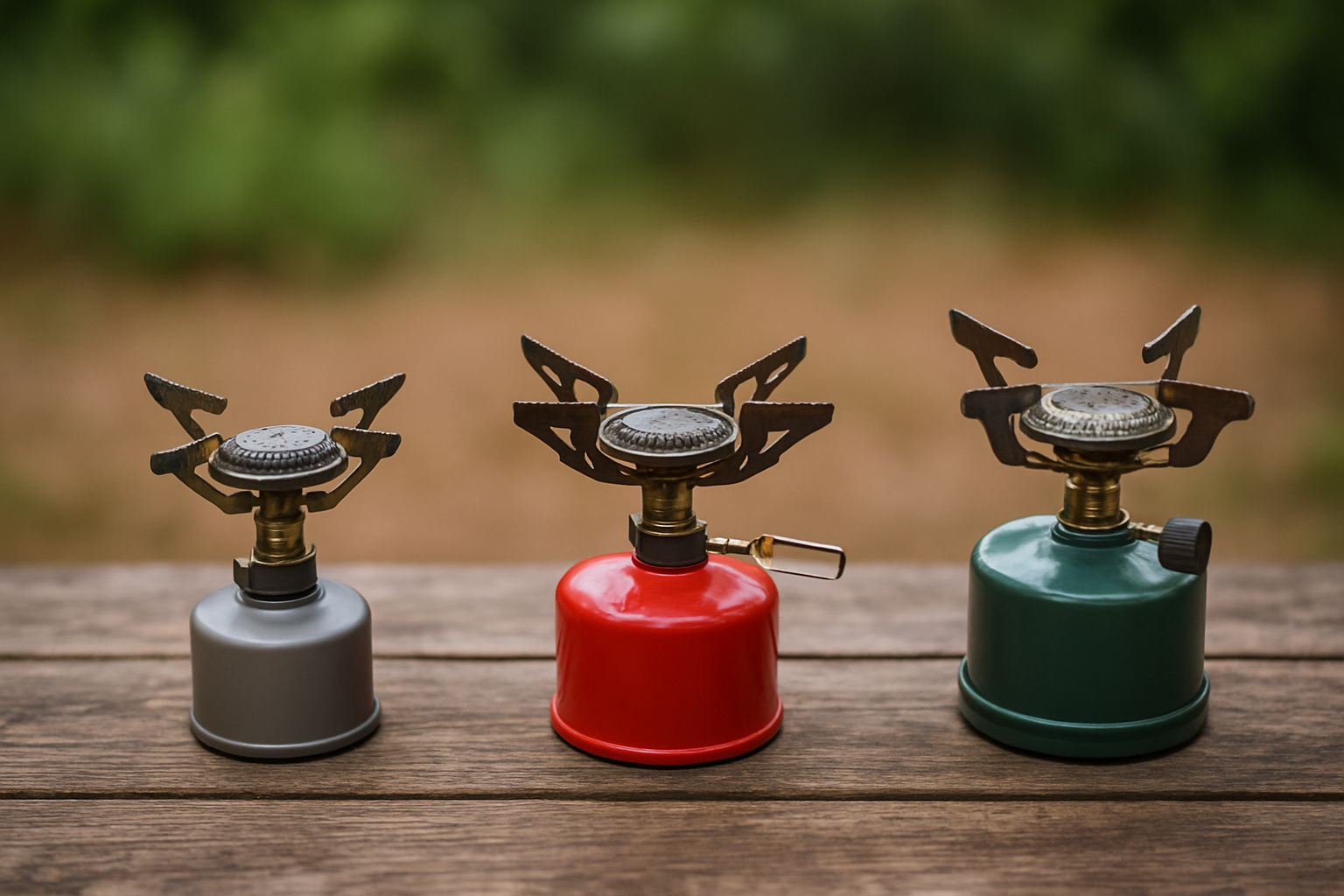
Think in layers: environment, group, menu, and risk tolerance. For windy ridgelines and fast coffees, integrated canister systems dominate. For cold mornings where you still want the simplicity of canisters, remote stoves with inverted fuel shine. If you need guaranteed output in true winter or you are melting snow, liquid fuel stoves remain the benchmark. Families who value real simmering and parallel cooking will be happiest with a two-burner propane setup that behaves like a home range. Ultralighters who accept slower boils and one-pot recipes can save a half pound (lb) or more with alcohol.
- Define your coldest likely temperature and highest realistic wind speed in miles per hour (mph).
- List your must-have meals and note whether they require simmering or just boiling.
- Choose a stove class that covers those edges, then pick cookware that fits the flame pattern.
- Use a lid, shelter from wind, and carry a reliable ignition backup regardless of stove.
- Plan fuel by grams (g) or ounces (oz) per meal, adjusting up for wind and group size.
Finally, be honest about your comfort with maintenance. If you love tinkering and prioritize resilience, multi-fuel stoves reward attention with global fuel flexibility. If you simply want to boil water fast and light, a pocket canister stove paired with a smart pot is tough to beat. Either way, aligning your choice to your environmental edges is where the wins stack up trip after trip.
Safety and Efficiency Tips Backed by Testing
Safety sits above speed. Never operate any stove inside a tent due to carbon monoxide (CO) and fire risk, and always check for local fire restrictions. On snow, set a rigid base to prevent tipping as the stove sinks. Keep canisters shaded and never wrap a complete windscreen around a canister stove, which can overheat the canister. For efficiency, use lids, pre-soak grains, and consider a pot cozy to finish cooking off-flame, saving grams (g) that add up over a multi-day route.
- Ignition strategy: Carry two sources, for example a lighter and a ferro rod, even if your stove has a piezoelectric igniter.
- Pot pairing: Match pot diameter to burner head; overhang creates cold edges and wasted fuel.
- Stability: On uneven surfaces, choose wider bases and lower profiles, or add a canister stabilizer.
- Maintenance: For liquid and multi-fuel stoves, clean jets after dusty trips; pack spare O-rings and a small wrench.
Notes from independent testing echo what experienced backcountry cooks report: wind management is often the most powerful lever you control. Get more windproofing tips and gear in our windscreen and accessories guide. By dialing that in with a smart setup, you can cut fuel carry, shorten boil times, and enjoy calmer meals even when the weather is not cooperating. That is the kind of systems thinking Heatinerary builds into every Trip-Tuned Stove Lab recommendation.
What This Means For Your Next Trip
The real victory is not a single fastest boil, but a stove system that matches your route, weather, and appetite. With the right pairing, you can turn fuel into meals with less noise and fewer surprises. Heatinerary’s comprehensive camping stove reviews and guides, paired with our Trip-Tuned Stove Lab for precise stove, fuel, and cookware matching, remove uncertainty so you can focus on landscapes, not logistics. And when a storm rolls over the ridge, your dinner plans stay steady because you chose for the toughest moment, not the average day.
Ready to act? If you already know your trip profile, you now have a clear path to shortlisting the right stove class and fuel. If you would like hands-on help, our experts can translate your elevation, forecast, and menu into a confident plan that balances speed, control, and safety. Among all the portable camping stove options out there, that is the quiet superpower: matching your system to your adventure with intention.
Boils, simmering, cold starts, and wind performance, distilled into real decisions for your kit.
Imagine your next camp kitchen lighting cleanly on the first click while gusts rattle the trees and your pasta holds a gentle simmer without a babysit. In the next 12 months, more hikers and families will adopt condition-tuned setups that save fuel and time, because the data finally speaks your language. Which of these portable camping stove options best mirrors the places and meals you are dreaming about right now?
Additional Resources
Explore these authoritative resources to dive deeper into portable camping stove options.
Match Your Stove With Heatinerary
Heatinerary’s Trip-Tuned Stove Lab provides tailored recommendations for stoves, fuels, and cookware based on route, season, and weather, ensuring safe and efficient cooking anywhere for campers and backpackers.

